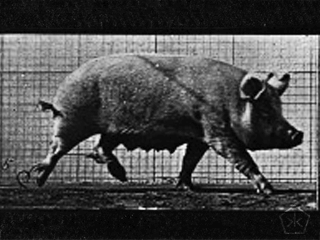If we progress intelligently, we should be able to feed a much-larger world population while being kinder to animals and the environment. That can’t be done at hatching factories and the like, but perhaps biotechnology can fill the cupboard. An exchange from Techononmy between Paul Gurney of McKinsey and Andras Forgacs, co-founder of Modern Meadow, developer of cultured animal products:
Paul Gurney:
What is the advantage of removing the live animal from the equation?
Andras Forgacs:
Sure, so just by way of context, at Modern Meadow we have a food program and we have a materials program. We’re developing a way to grow leather and leather-like materials without having to slaughter animals, and we’re also developing a way of growing meat and umami savory products without having to slaughter animals. Now, that said, the animal is not completely absent from the equation, because you need to source the cells from somewhere. So, in the case of our food program, we take cells from the very best animals you could possibly imagine, the healthiest animals, and by the way the process does not need to kill the animal. So this a great way of going to the prize winning heifer, the most delicious Angus cow, taking cells from it, the cow can continue to live a very happy life.
Paul Gurney:
So you take a biopsy, basically?
Andras Forgacs:
Exactly. You take a biopsy, and then we expand those cells in very large quantities. So we’re effectively becoming the world’s most efficient mammalian cell factory. Now the advantage—and in the materials program, we actually may not ever need to go back to the animal, because we can do things at the cellular level that means we never have to go back to the animal again. But the advantage of doing that is that animals take a lot of space.
If you put all the livestock industry all together, it’s using about a third of all available land, ice-free land in the world, directly or indirectly, for grazing or for feed crops. They consume a lot of water, and they contribute to a lot of greenhouse gas emissions. So by taking animals out of the equation and just relying on a much smaller donor pool of animals, the process is a lot less resource intensive. And you also have a lot more control over the process. Animals have a fairly inefficient feed conversion ratio. It takes about ten pounds of grain for a cow to produce a pound of bodyweight, and you only consume, effectively use one third of that mass for food.
Paul Gurney:
And ridiculous amounts of water, right?
Andras Forgacs:
Exactly.•

